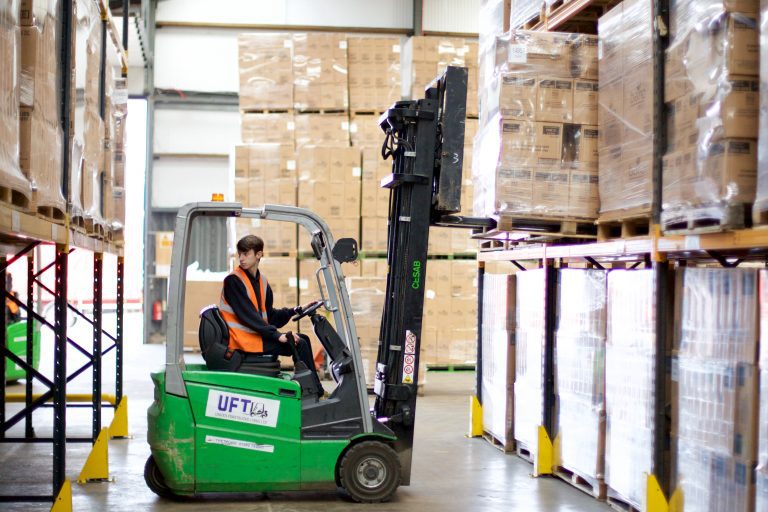
Warehouse
What is the IoT?
Until relatively recently the Internet has been composed entirely of computers connected to one another over a network to send, receive, process and store information. However, innovative technology has now changed the ways in which we can interact and understand the world around us, and ultimately our ability to process and use that information.
The IoT allows us to connect physical objects to computers and/ or other physical objects, to create a network of interconnectivity like never before. A forklift for instance is obviously not a computer, it was designed to move pallets or other heavy objects, not to store, process, send or receive data. Yet new and innovative technologies have revolutionised forklifts capabilities to not only fulfil their primary use, but to collect revolutionary data capable of driving time saving, cost cutting and forward-thinking strategies previously out of our reach. Nowadays modern forklifts can report data detailing their own impending mechanical problems or alert us to safety risks, they can tell us the number of lifts they’ve made, or the distance they have travelled. A forklift connected to a computer can report useful data on warehouse inventory mapping. Interconnected GPS tracking systems speed up, regulate and manage the flow of a warehouse; when a barcode is scanned on a package, the communication systems can alert the nearest forklift, direct them to the package and then direct them to a drop off location. And this is just the beginning, this is the IoT in its infant years. The rest is yet to come.
Logistics is one of the top four industries adopting IoT technologies and driving advancements and innovations at a mile a second.
Autonomy
You can’t discuss the future of these technologies without at least touching upon the controversial topic of autonomous machines, capable of fulfilling their primary function with little more interaction from a human than pushing a button, and keeping them oiled and serviced. Love it or hate it, autonomously operating machinery is no longer a sci-fi dream, but an everyday reality. In August last year, the news was awash with the unveiling of a ‘platoon’ of three ‘self-driving’ lorries that were set to be tested on British roads. Many Forklift manufacturers have already developed ‘self-driving’ autonomous machinery with advanced technologies that can track, monitor, interpret and navigate their surroundings. The ethics, implications and effectivity of these is, however, so content rich it’ll have to save for another blog entirely… watch this space.
Traffic and fleet management
Did you know that a streetlamp connected via the IoT can record information on road use? It can sense the presence of vehicles and provide information for route planning and to optimise the flow of traffic. Long gone are the days of outdated real-time reporting, the IoT now allows us to accurately predict with some certainty not what is happening right now, but what will happen next. This will take route and traffic planning quite sharply to the next level. Imagine a HGV that is no longer an alien in a city of traffic, but one that is connected to the traffic lights, automatically sets speed restrictions, that can analyse and predict congestion and reroute before a build-up. Imagine travelling from one end of London to the other following a precisely timed and mapped route designed to collaborate with the traffic light systems, meaning you’ll never stop at a single red light. Imagine the fuel consumption reductions and the time saving possibilities.
Customer experience
The IoT is also set to revolutionise your customer experience, with track and trace technologies already seeing a facelift from intermittent scanning, to continuous tracking. Our shopping habits have also shaped a fast paced, time restricted supply and demand that has force driven the innovation of technologies that can keep up with our equally fast paced, multi-faceted lifestyles (Read more on how our shopping habits have shaped the logistics industry here…) we are continuously striving to reduce delivery times, speed up shipping and move goods across the country faster than ever before.
We are truly only just beginning to understand the capabilities and levels of connectivity that the IoT can offer.
However, one thing is for sure, the IoT is set to transition the logistics industry from data reporting, decision making and transportation that is intermittent, to a continuously connected and streamlined flow of synergistic communication that will maximise profit, time and impact. The question is, will it be at an ethical and moralistic cost?

Comments are closed